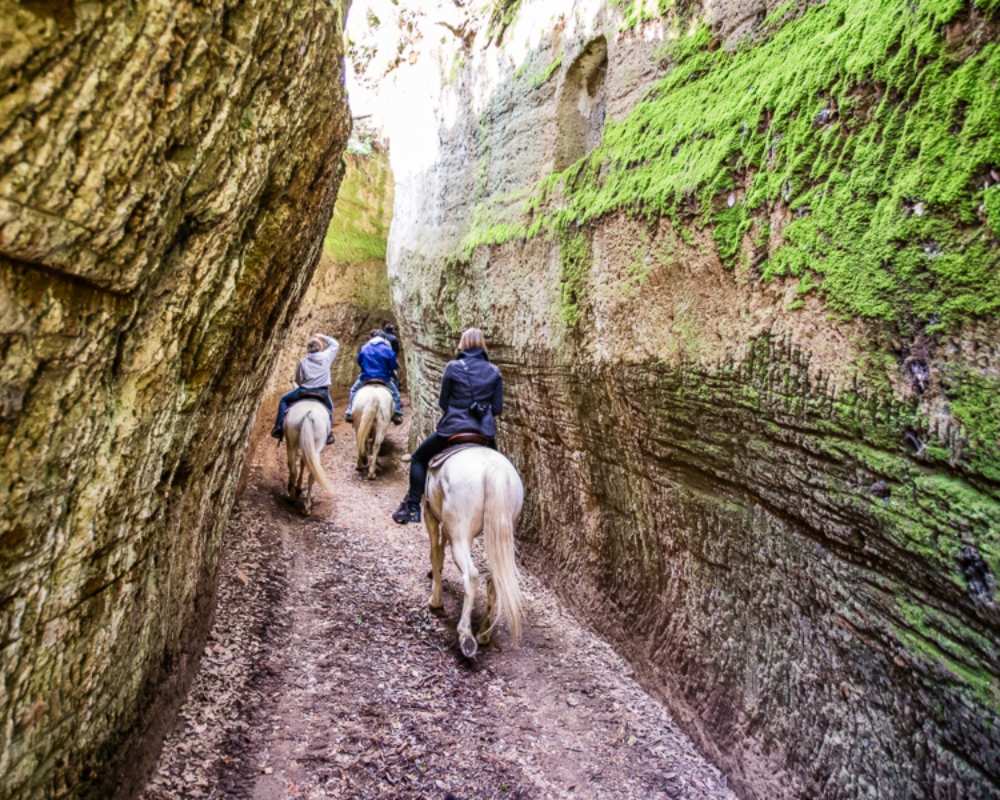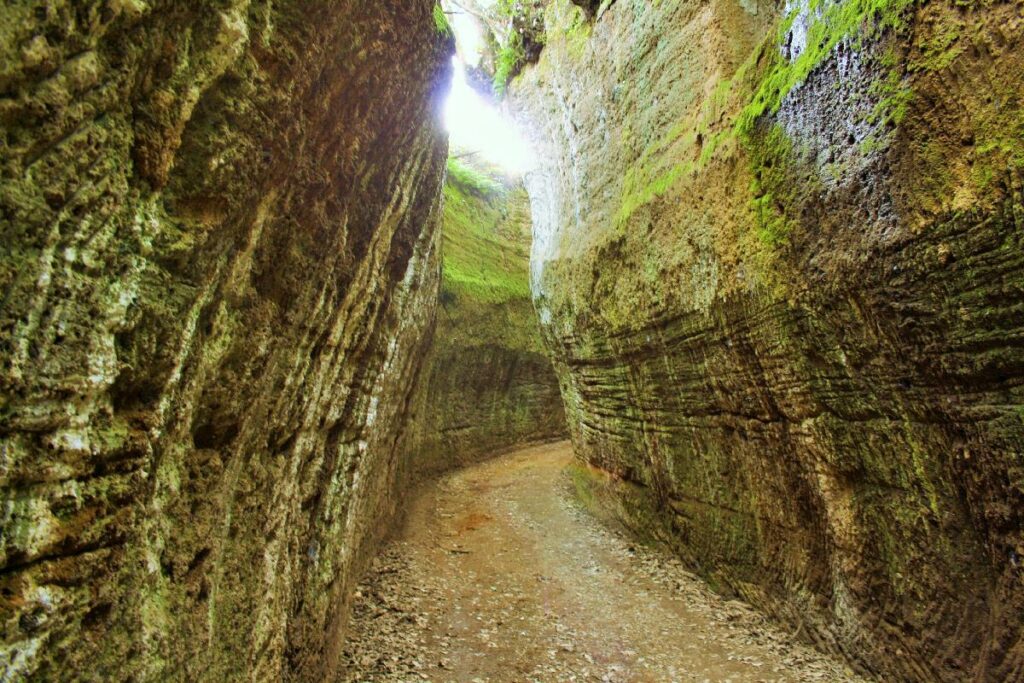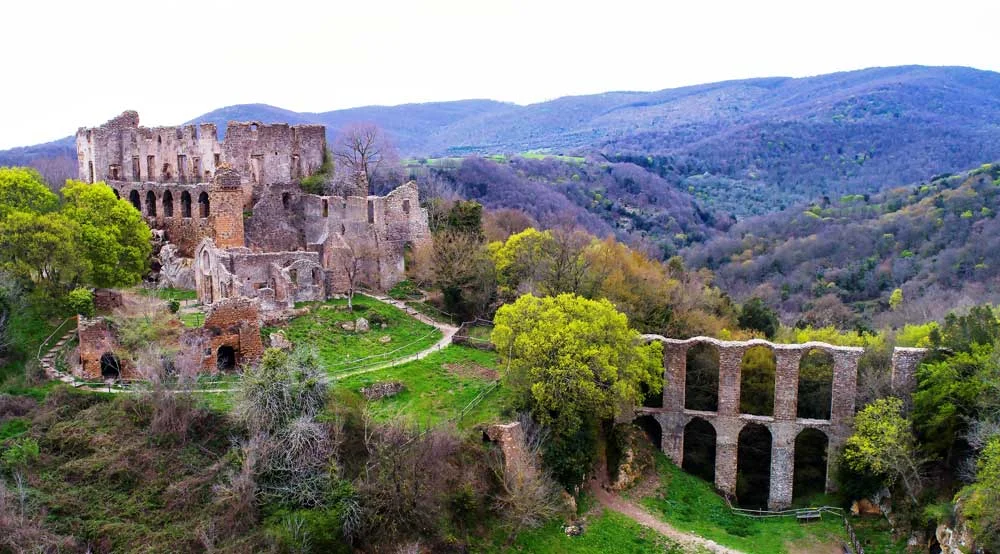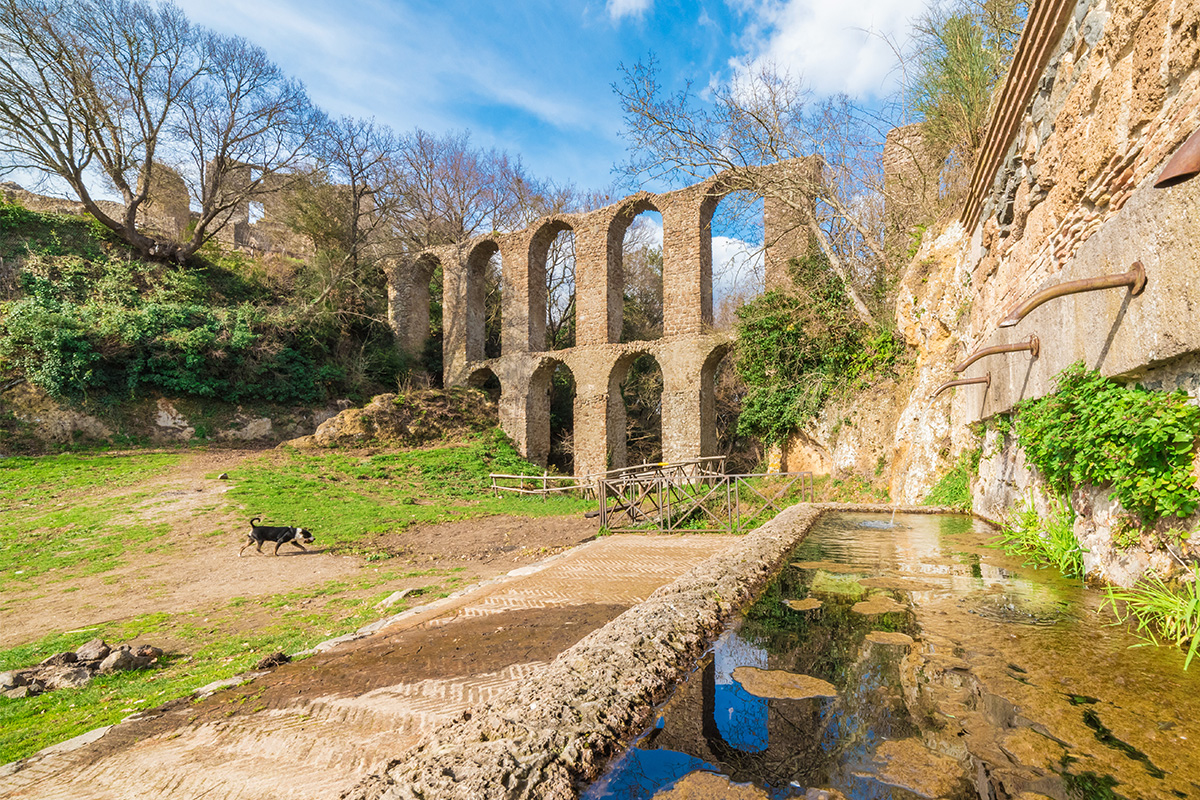Discover our favourite itineraries
TUFA PATHWAYS “VIE CAVE” IN TUSCIA:
The itinerary along the ancient Etruscan paths and the most astounding villages in Northern Lazio. The Etruscan tufa pathways “Vie Cave” outline a fascinating itinerary connecting Tuscan Maremma to Northern Lazio and strolling across Tuscia, too.
Enchanting landscapes and paths out of time shape a totally preserved natural environment and give witness to a 2000 year-long story. Among the most impressive venues there are the rock-hewn Necropolis of Norchia between Tuscania and Vetralla, the Sasseto Woods – aka Fairy Tales Woods – near Acquapendente, and the Park of Vulci, the historical and natural oasis extending above Montalto di Castro, between Lazio and Tuscany.


The Etruscan tufa pathways depart towards Maremma and reach as far as some astonishing tufa villages: Sorano, Sovana and Pitigliano. Other “Vie Cave” well worth visiting are in Sutri, on the rock beyond the Roman Amphitheatre, inside the archeological park, a few kilometers away from Relais Villa La Trinità. The paths surrounding the amphitheatre are rich in encarvings and awesome natural views.
The Etruscan tufa pathways depart towards Maremma and reach as far as some astonishing tufa villages: Sorano, Sovana and Pitigliano. Other “Vie Cave” well worth visiting are in Sutri, on the rock beyond the Roman Amphitheatre, inside the archeological park, a few kilometers away from Relais Villa La Trinità. The paths surrounding the amphitheatre are rich in encarvings and awesome natural views.

ANTICIENT RUINS OF MONTERANO
Monterano is an abandoned village sitting on the top of a tuff hill inside the natural park of Monterano, located in the center of Italy not too far from Rome and Bracciano’s lake.
Monterano has been a human settlement since the Bronze Age and grew into a flourishing town during the Etruscan Age. It got its name, “Manturanum,” in the Roman Age and regained much of its power and beauty in the Middle Age. A portion of the Roman aqueduct still stands as a lonely witness to those days.
The largest structure in the centre of Monterano is the castle. The stronghold was redesigned and reshaped during its life, up until the Baroque age. In 1679, one Prince Altieri commissioned the famous artist Gian Lorenzo Bernini to completely remake the fortress, transforming it into a modern palace with a beautiful fountain featuring a lion statue on top.


In the same period, Mattia de Rossi, following Bernini’s project, built the San Bonaventura’s monastery which stands out on a plain a little farther out from the town and is also still visible today.
In the following years, thanks to a movement of commercial power and importance, the town began to decline. In 1799, after a fight between local families, the French army sacked the town and an outbreak of malaria soon followed. These combined disasters led to Monterano being all but abandoned in fairly short amount of time.
It is said that the cause of the exodus was extreme brutality perpetrated by the French soldiers who destroyed most of the buildings and the possessions of the villagers. It was basically cheaper and convenient for the population to simply leave everything and start from scratch elsewhere.
The remains of the former settlement have since aged into beautiful ruins and Monterano has been the backdrop to a number films such as, Ben-Hur (1959), Mario Monicelli’s Brancaleone alle Crociate (1970) and Il Marchese del Grillo (1981), Marco Bellocchio’s La visione del Sabba (1988), among others.